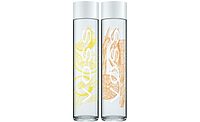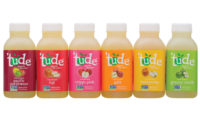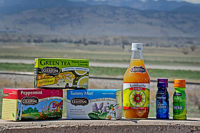Like most beverage companies, Dr Pepper Snapple Group, Plano, Texas, can look back on the past year as one of the most unique and challenging in decades. But DPS faced the added pressure of being spun off from London-based Cadbury Schweppes last spring, leaving it to deal with the rapidly changing marketplace all on its own.
“There couldn’t have been a worse year to go public,” admits President and Chief Executive Officer Larry Young.
“It was just unbelievable the headwinds we were facing — the economy, unprecedented commodities prices, credit markets just basically shut down. But when you look at what the team was able to do — we outperformed the industry.”
Young credits the company’s strategic focus on its “powerhouse” brands and a realignment of its business segments for its ability to rise above the economy’s challenges. The company is the leader in flavored carbonated soft drinks, with brands such as Dr Pepper, 7UP, Crush, A&W and Canada Dry, as well as non-carbs such as Snapple and Mott’s.
“We looked at the business and said, ‘We’re going to have a very focused, strategic approach on our brands,’” Young says. “In our portfolio, we own 58 brands, so you’ve got to really focus and say, ‘These are the brands we’re going to invest behind,’ our powerhouse brands,” he says.
While some had written off CSDs to sliding sales, Young says flavored soft drinks are the “sweet spot” in the industry.
“When you look at our business, a lot of people say CSDs are declining, but if you really drill it down, it’s really cola fatigue than total CSDs,” he says.
DPS says 75 percent of its flavor brands are No. 1 or 2 in their categories. The company put a great deal of work into making sure those flavors were more widely available across the country, particularly in markets where per-capita consumption was lower for certain brands. It also added new flavors and functionality to some brands, and totally revamped brands like Snapple.
The company operates on an integrated business model that includes company-owned direct-store-delivery and warehouse delivery systems, as well as partnerships with third-party distributors. It realigned last year to create the Packaged Beverage division, which is led by President of Packaged Beverages Rodger Collins, and a Beverage Concentrate division, led by President of Concentrate Sales Jim Johnston. The Packaged Beverage division is responsible for sales through DPS’s company-owned DSD, as well as its warehouse-direct business. The Concentrate division handles sales to bottlers, including third-party distributors in the Coca-Cola, Pepsi-Cola and independent bottler systems.
Increasing availability of DPS brands in immediate consumption locations has been a goal of both divisions. The company implemented a plan last year to add 175,000 coolers and vending machines throughout a five-year period. In addition, it has put brands like Dr Pepper in more fountain machines in foodservice outlets. It added 31,000 fountain placements in quick-service and fast-casual restaurants last year. It announced earlier this year that it will add 14,000 McDonald’s restaurants in the United States, bumping its availability in that chain from 60 percent to 100 percent nationwide, and doubling the availability of Diet Dr Pepper in those outlets to 50 percent. And just last month, it announced a multi-year agreement with Jack in the Box to expand availability of Diet Dr Pepper to all of its restaurants nationwide.
“When you look at our brands — all of our brands — when they are available, they sell,” Young says.
“If you have people drinking your products at work, at play, when they go into the grocery store, they’re going to buy that product and take it home with them. So we put a very strong focus on what we like to refer to as our lower per-cap markets. We beefed up our marketing there, we’ve made sure we were closing distribution voids, placing cold drink equipment. Our fountain/foodservice team has done an excellent job of getting Dr Pepper and some of the other brands on the fountain equipment.”
The company also entered into agreements with Pepsi Bottling Group, Somers, N.Y., and PepsiAmericas, Minneapolis, for distribution of its Crush brand in their markets. The agreements doubled the availability of that brand, and first quarter results show Crush is now the second best-selling orange-flavored CSD behind DPS’s Sunkist in Nielsen’s measured channels.
Approximately 40 percent of DPS’s distribution is through its company-owned DSD system, 40 percent is through third-party distributors, 10 percent is warehouse-direct and 10 percent is foodservice.
DPS’s company-owned DSD covers territories in about 77 percent of the United States, and has its major focus on Dr Pepper, Snapple and what the company calls the Core 4 — 7UP, Sunkist, A&W and Canada Dry.
“We can make decisions very quickly, and it’s paid us a lot of rewards by being able to go to these large retailers and come up with a promotion, make a decision and make it happen instead of having to go out and get a tremendous amount of bottlers in line like we used to have to do in the past,” Young says.
Streamlined decision-making, in fact, is one of the biggest differences the company as a whole has noticed since its spin-off from Cadbury, Young says. As a smaller company, DPS does not have to compete for resources, and its key decision-makers are all located on one side of the Atlantic.
“Here, we can make decisions,” he says. “We gather the facts, the teams are right here and if it’s the right thing for our brands, we make that decision on the spot.”
Brand innovation
Many of the decisions the company has made during the past year have focused on brand development and innovation. DPS completely overhauled its Snapple line, created new functional CSDs such as Canada Dry Green Tea Ginger Ale and Cherry 7UP Antioxidant, and bumped up its marketing investment in all of its major brands.
The primary focus at DPS is carbonated soft drinks, as 80 percent of its business is in CSDs.
“Where CSDs go, we go,” Young says.
The question was how to put some of the excitement back into the category and pique the interest of consumers who may have strayed to other beverages.
The company added a new Green Tea Ginger Ale to the Canada Dry line last year, and the brand “just blew away the numbers we thought were going to be there,” Young says. “Our base Canada Dry business continued to grow and the Green Tea Ginger Ale was incremental.”
The company researched the brand’s success and found that 80 percent of the Green Tea Ginger Ale consumers had left the CSD segment, and came back when they discovered the new brand. The company added a diet version of the product early this year and added antioxidants to a 7UP line extension to see if it might spur similar results for that brand.
In addition, it updated A&W Root Beer by adding aged vanilla to the recipe, and developed Dr Pepper Cherry, a new flavor for light consumers of Dr Pepper.
“As we were doing our research, we found that the light user on Dr Pepper thought that Dr Pepper had a little bit of a strong taste,” Young says. “So we went into the R&D center and got the teams together, and we put in a touch of cherry that smoothed it out.”
The most dramatic brand makeover, however, was the Snapple relaunch. The Snapple business consists of three lines, a super-premium line of black, white, red and green teas; a premium line that makes up the bulk of the business; and a cold-fill value line.
The largest segment of the Snapple business, the premium line, got new bottles, new graphics, a new formulation that switched from high fructose corn syrup to sugar, and new multi-packs in a variety of sizes from four-packs to 12-packs, depending on geography.
“We realized the [Snapple] bottle hadn’t been changed since 1984. The label was the same,” Young says. “In our consumer research, we found the bottle wouldn’t fit in a cupholder because cars didn’t have cupholders in ‘84. And we said, ‘There hasn’t been a lot of news and talk about Snapple. No one will ever say this team didn’t do anything with Snapple.’”
In addition to Snapple, DPS’s non-carbonated lineup includes juice products such as Mott’s Apple Juice, Clamato, Hawaiian Punch and Mr. & Mrs. T’s mixers. A number of those operations had resided in the Northeast, but prior to the company’s spin-off from Cadbury were moved to the Texas headquarters.
The recent economic downturn has been a boon to the Hawaiian Punch brand, Young says. The value-priced product saw double-digit growth in the first quarter of this year.
The company also launched a new juice concept in 2007 with Mott’s for Tots, a lighter juice product for young children. Young says the company based the product on the practice many mothers use of diluting fruit juice with water to cut down on sugar.
“Mom was taking the apple juice and cutting it in half to give it to infants and children,” he says. “Whenever you cut it in half with water, you cut the nutrients in half also. So we took it, cut it with water and then increased the nutrients to the full apple juice.”
In a completely different type of product, DPS teamed with Anheuser-Busch early last year for the rollout of Budweiser & Clamato Chelada and Bud Light & Clamato Chelada beers.
Some of DPS’s new product development has come as a result of losing distribution of popular brands such as Monster Energy Drink, Rockstar Energy Drink and Glaceau Vitaminwater. It created Snapple Antioxidant water to fill the distribution void left by Vitaminwater, as well as its own energy drink, Venom, after losing two previous brands.
In addition, it created equity agreements for products such as Big Red, All Sport and Hydrive.
“We built a lot of tremendous brands out there for other people with distribution agreements,” Young says. “With just a distribution agreement, they can sell it and take the business away from you … So we said from now on, any distribution agreements we do, we want an equity stake.”
Positioned for the future
DPS has not only invested in brand development during the past year, it also has boosted advertising spending against most of its major brands during a time when many companies have pulled back on marketing. Young says the recession has meant the company can get more for its marketing spend these days than it did in previous years, and that investing in marketing now positions the company well for the future.
“I’ve had a lot of people say everyone else is cutting their marketing spend,” he says. “I think when times are tough, that’s when you have to really get out there.
“This is going to straighten up. We have a tough economy right now, but we’re still the No. 1 country in the world. It’s going to turn around, we’ve seen it before ... I think whenever it does straighten back out, we’re going to be really well positioned to reap the rewards.”





